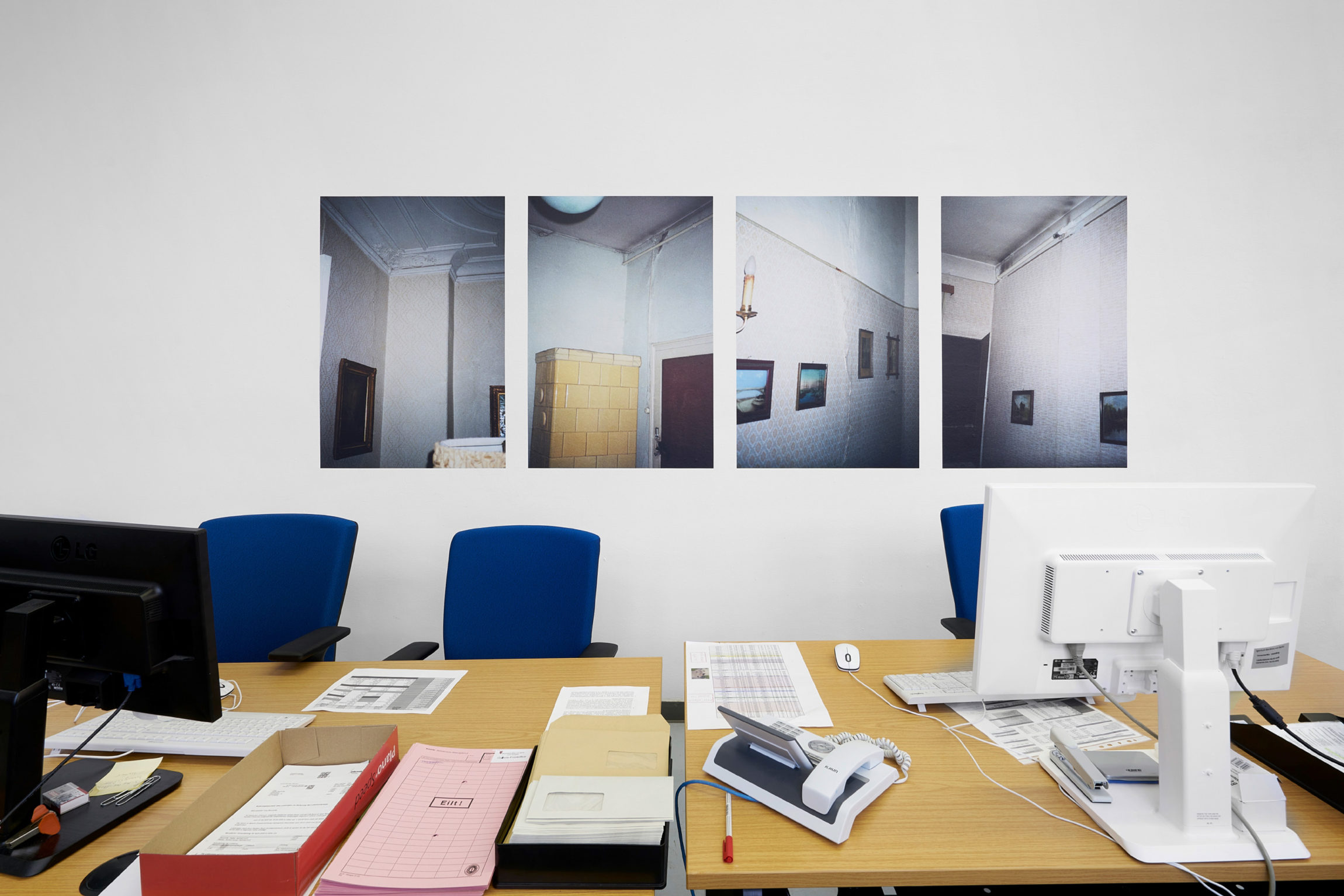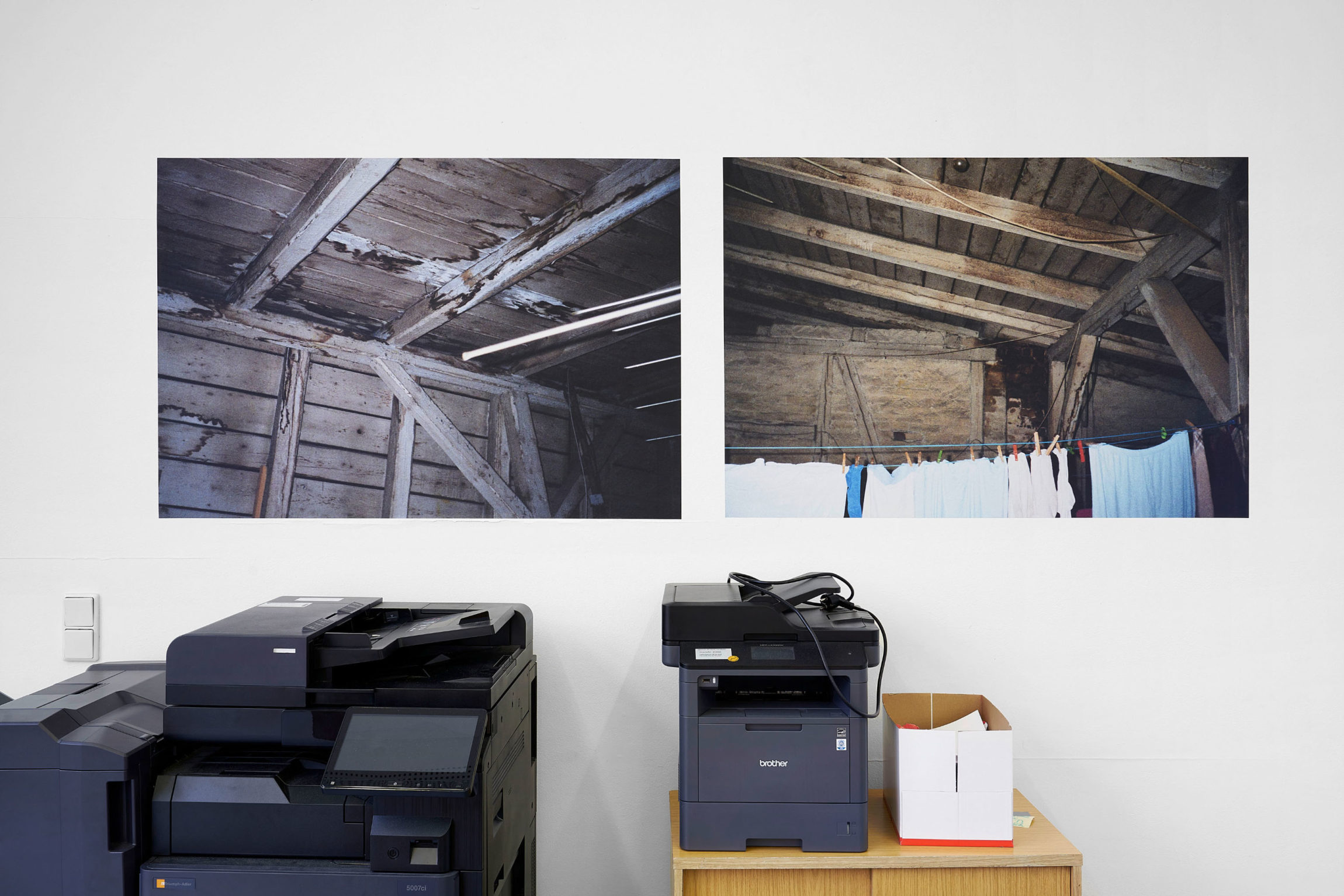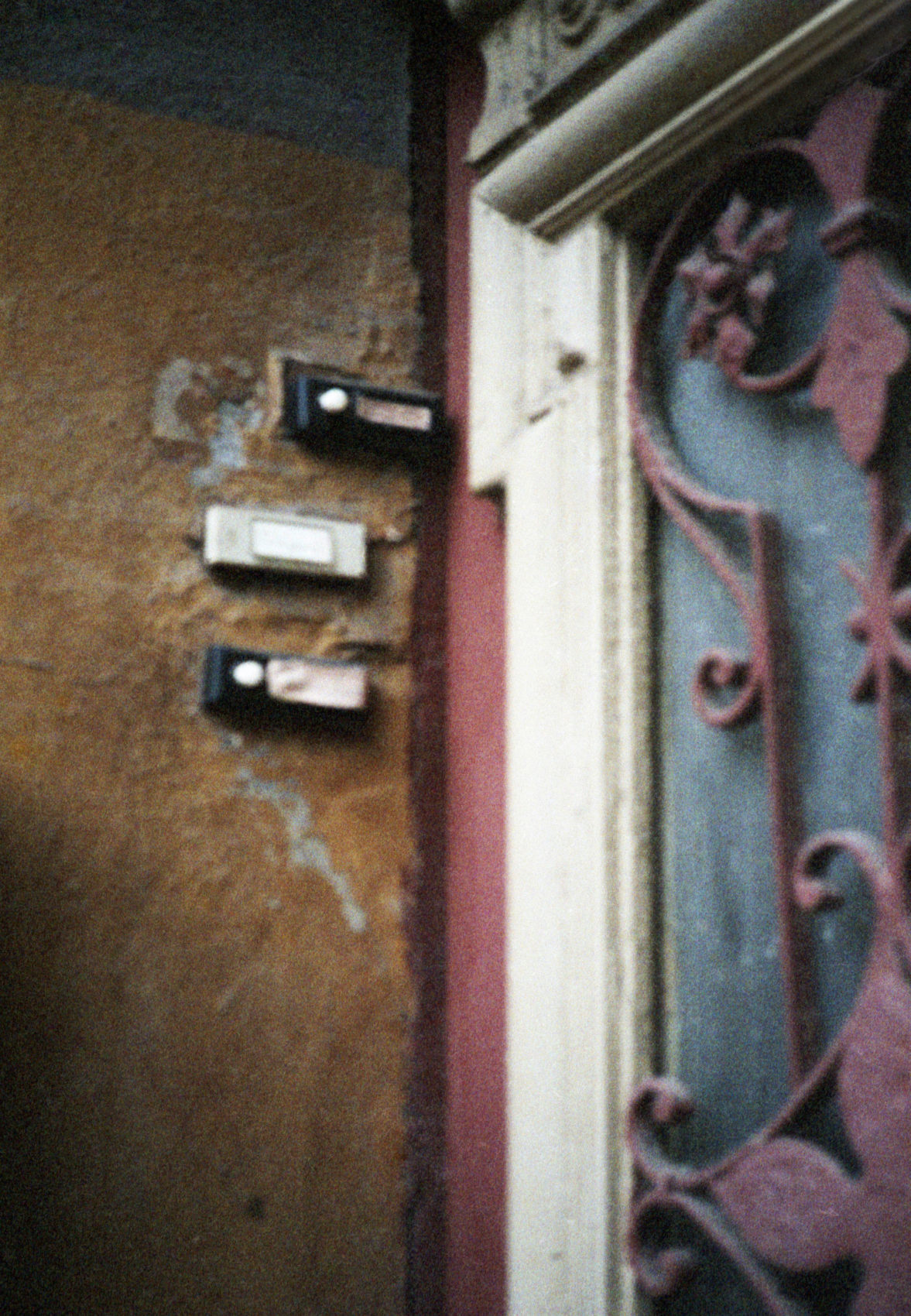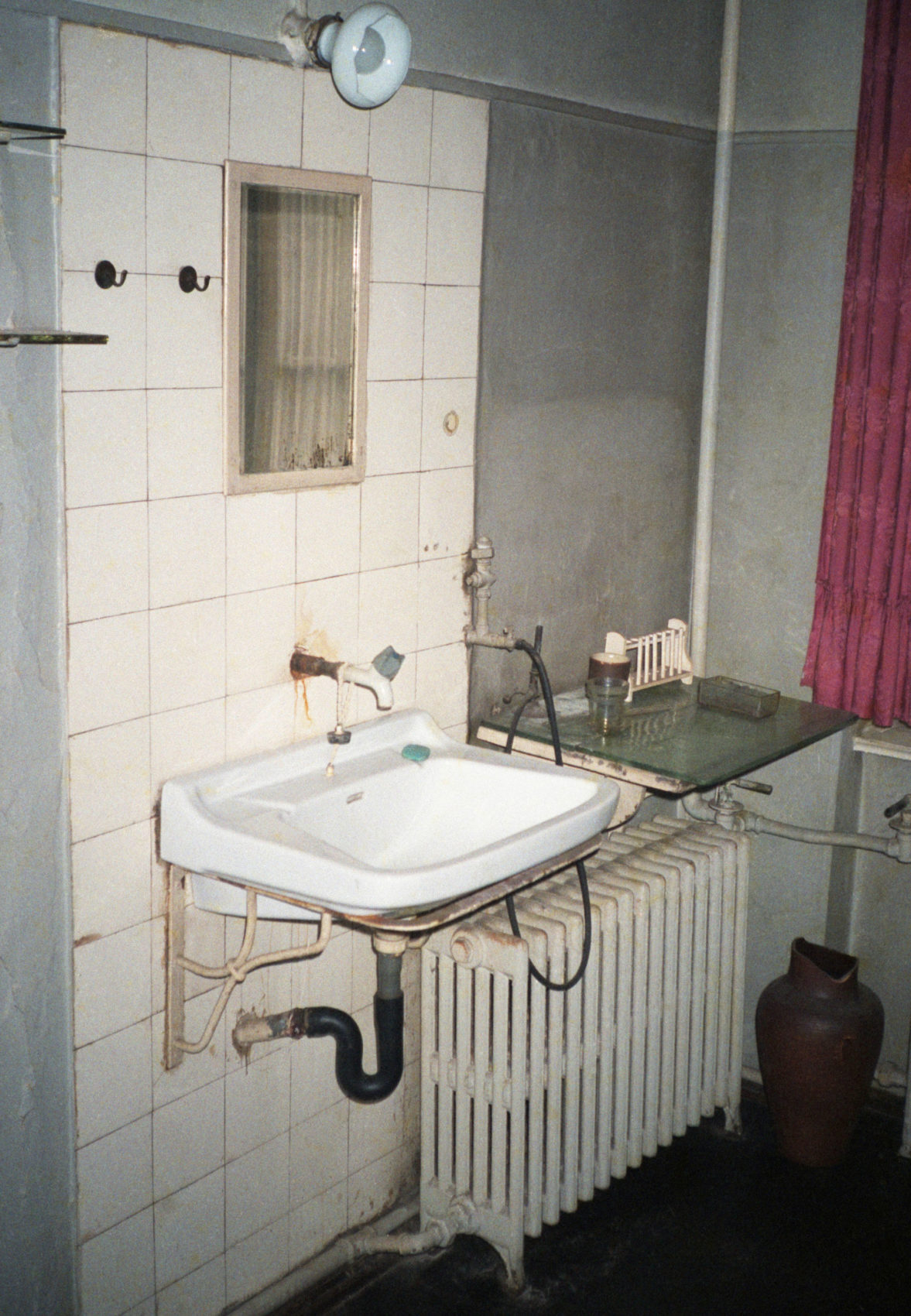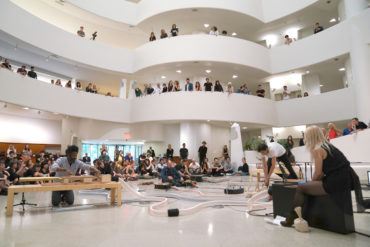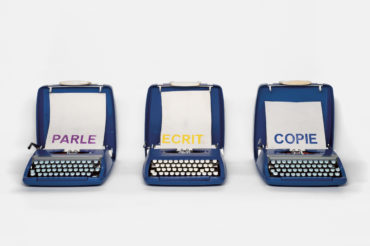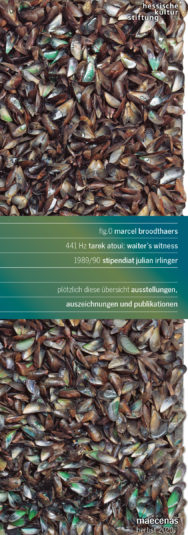scholarship holder
How and in what form are national identities constituted? What influence do institutions or businesses have on our perception of art? What shapes how history is written? These questions concern Julian Irlinger in his work as an artist. The material he uses for his artistic analyses are found artefacts such as banknotes, free images from the internet and, lastly, personal documents from his family archive. Irlinger collects and orders his found material according to the principles conveyed by the artefacts themselves.
Thus in his series Fragments of a Crisis Julian Irlinger sheds light on the relationship between aesthetics and ideology in emergency banknotes (over 100,000 motifs) designed by regional artists that were issued in the Weimar Republic during the period of inflation from 1918–1923. By showing magnified details of the notes’ designs, which as means of exchange for goods would have received only scant attention, he highlights and queries their pictorial strategies.
Irlinger has continued this analytical, conceptual approach to his subject in his latest work Gift. In an interview he talks about the background to the work’s donation to the Wende Museum of the Cold War in Los Angeles and the archive’s function for historical research and national identity. This exceptional museum was founded twenty years ago by the historian Justinian Jampol to preserve the art, culture and history of the Cold War in the countries of the former Eastern Block, and to research and communicate their legacy. Parallel to his training in art history and paedagogics, Julian Irlinger also studied at the Hochschule für Grafik und Buchkunst in Leipzig and at the Städelschule in Frankfurt am Main, where he graduated in 2017 under Willem de Rooij. After that, he participated for a year in the Whitney Independent Study Program in New York.
Sylvia Metz Julian, your exhibition Gift was on view at Galerie Wedding in Berlin until the end of July. In it you examine questions of truth in how history is written, the mechanisms of institutional processes, issues of ownership in West and East Germany. What led you to the complex theme of this exhibition?
Julian Irlinger The exhibition at Galerie Wedding is part of a process linking up several stages of a larger project. Everything on display there – documents and reproductions of photographs – is part of a donation that will later go to the Wende Museum in Los Angeles. The exhibits will be presented there one more time, but will thereafter be preserved as archival material and be made available for research and exhibition purposes. For many years now I have been interested in how history is written. What institutions play a role in this, what mechanisms come into play? Related to this, for the last two or so years I have been concerned with the construction of national identity. I have produced several works on this, exploring the role played by archives in historiography. In the course of my research I came across the Wende Museum in the US, whose archive holds the largest collection of GDR materials in the world. At first I was astonished to find a museum in the US that exhibits German history. Although it cooperates with European institutions, the museum has the final say on how the exhibits are historically attributed. This issue of attribution is something I found profoundly interesting and wanted to examine more closely.
Metz So then you travelled to Los Angeles and worked intensively for several weeks in the Wende Museum’s archive. What impact did this trip have on your artistic work?
Irlinger At first I assumed it would probably be pushing a kind of “Hollywood history-telling”, so my approach to the museum was sceptical. I was worried I might encounter a sort of spectacle and expected to see Trabis under palm trees. In other words, a far more extreme fantasy even than the ones I know West Germans had. But then my view of the museum changed fundamentally. I got to know the Wende Museum and its archive very closely and was granted access to various sections as well as to the research archive. For several weeks I was given a fixed place to do my research and was supplied with archival material. I went through numerous document boxes, got to look at correspondence, teaching materials (like primary school books) and was able to browse negatives and b/w photos.
Metz Were there moments of surprise in the archive?
Irlinger Sifting the material, I gradually learned how the archive is constructed. This first meticulous exploration gave me an impression of the way this kind of archive is structured, how, say, its administration operates, or also how the archive expands through donations and purchases, resulting in shifts in meaning. During my stay new donations were often taken in and discussed within the archive. There were consultations about the criteria they met, which sections of the collection they should be allocated to, whether or not they should be collected at all. A donation for inclusion in the collection might be rejected if, say, there were already similar objects in the holdings. Through my work in the archive I increasingly understood how everything was interconnected. And in fact, this also gave rise to an entirely different process within my artistic production. The components of my work are still the same, but the process changed – making it a completely different work. With Gift I am actively manipulating an archive, thereby potentially altering the writing of history. The materials I am donating will be the first documents about expropriation in the GDR to be included in the Wende Museum. It was thanks solely to the grant from the Hessische Kulturstiftung that I was able to realise this project. It kept me free of obligations and made me financially independent. This trip was of elementary importance for me and my art. And as a result of the trip I came up with the idea of the exhibition Gift in Galerie Wedding. So you see, everything is very intimately interrelated.
Metz What exactly is your exhibition about?
Irlinger The exhibition is based on a batch of old documents I accidentally discovered when my father was moving house. The papers come from my grandmother’s estate; in the exhibition they are set in an artistic context. In this process they undergo a transformation from found object to art object. The documents tell us about property offences and property transfers in relation to a house in the former GDR. Some of the documents also date back to earlier periods, such as, for instance, an old Prussian mortgage deed. The most recent papers are from the early post-transition period in the newly unified Germany. By being shown in Galerie Wedding, all the deeds are set institutionally and aesthetically in an artistic context. Later, I will donate this material to the Wende Museum. Then, once again, we will be confronted by the material as a historical artefact.
Metz Had you previously talked about the house in the GDR with the family or was it this chance discovery that prompted the discussion?
Irlinger No, this had never been spoken about before in our family. Indeed, it was through finding the documents that I first became aware of the house. My grandmother was born in Schönebeck by the Elbe in Saxony-Anhalt. That much, of course, I knew, but nothing else. During the house move I stumbled across the deeds to a house in Schönebeck, as well as a number of official documents, among them the will stating that the house should be left to the family – as well as proxies guaranteeing that while my grandmother was no longer a resident of the GDR the house would continue to be maintained in the GDR and revenue from the house transferred to her account in West Germany. There are also documents from which it transpires that there had been a back transfer and an expropriation. At the Beginning of the 90s a company took photos showing the house on the inside and out. They contributed to the valuation of the run-down house for the subsequent sale. At that time I was not aware of this connection.
Metz In the exhibition you explore your family’s history while at the same time reconstructing a part of German-German history. Yet by donating these processes in the form of an artwork to the Wende Museum you yourself are forming history. You choose what the museum should receive and what not. This brings me to the question: do you believe there is such a thing as authentic, true historiography – or just a rehearsed historical narrative?
Irlinger In the end I think historiography is always a construct. That is certainly so when it comes to this archive, since the moment when something is incorporated in it or is rejected changes the potential for memory. It is precisely this moment that interests me so intensely about the idea of a donation. It is a form of active control yet at the same time a moment of letting go, since I am placing the material in someone else’s hands. Other people decide on its reception. They now bear responsibility for it, need to set it in context and come to terms with the material in regard to its thematic content. This makes you realise how important and meaningful the mediation of archives in the museum is. In essence, the archive serves as a stage for grappling with the meaning and representation of the past, the present and the future.
Metz Against this background your exhibition title Gift assumes an entirely different connotation… The German word for “poison” and the English term for a donation open up a broad scope for interpretation.
Irlinger That’s how I see it too!
Metz But I am still curious as to why instead you aren’t giving the documentary material to an archive or another cultural institution in Germany. Are there reasons for this?
Irlinger I came up with the idea for my project in the US. That wouldn’t have happened in Germany. It showed me that I required geographical distance from Germany – and maybe also that this distance could be necessary to examine and write history from a different understanding. For me, going to a different place was and is important in order to call my own work into question. Once elsewhere, I am open to new impulses and ideas that wouldn’t occur if I always stuck to the same unshifting routine. And after all the experiences I gained on my trip and through my preoccupation with this subject it struck me that the Wende Museum was the right place for my donation. Nonetheless, I am quite aware that this endeavour is not without certain risks.
Metz This year is the 30th anniversary of German Reunification. What significance does this event hold for you?
Irlinger It means a lot to me on a number of levels. First, there are my own, family-based East-West relations. Then I lived for a couple of years in Leipzig. That allowed me to see how much of the GDR was still “left over”. I was quite involved at the university, where the curriculum was strongly shaped by old GDR structures, like with its particular emphasis on teaching craft skills. And on a societal level I believe a certain amount of time needed to pass before we could properly address what exactly was happening in Germany. My project also stands for this reflection. And it also tallies with the fact that at the moment in various areas of culture people feel a strong need to consider the GDR in a different light than was done previously in Germany – and the unification of both countries too.
Metz Do you deliberately say “unification” rather than “reunification”?
Irlinger Yes. Personally, I don’t view the so-called Reunification as a great heroic act of fusion. For me this event in 1990 was a unification, not a reunification, since what was made one was not something that had previously been one in that form. So much has changed now, and at the same time this unification has brought on so many new realities. I am therefore eager to see what will come next.
